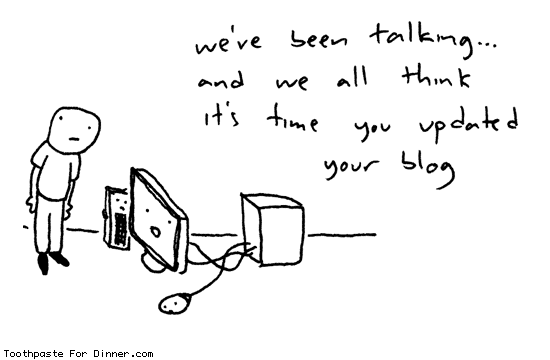
The flow of information due to the use of blogs as portfolios is two fold. This means that the owner can receive and give information to any of the given audiences. This is done by the posts made by the individual and the comments made about the posts from the various audiences.
The comment function is possibly the most important function of the use of blogs for portfolios because the owner is able to receive feedback from a vast range of audiences, whereas with an 'old' portfolio the comments are restricted to the teacher and the parent (or other caregiver). This means that the owner is more exposed to feedback (and other forms of assessment) and therefore their learning grows. They will also put more effort into the presentation of the work as it will be shown to many more audiences.



